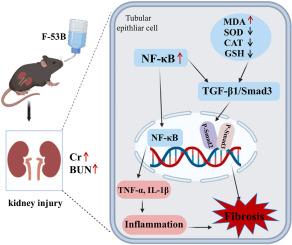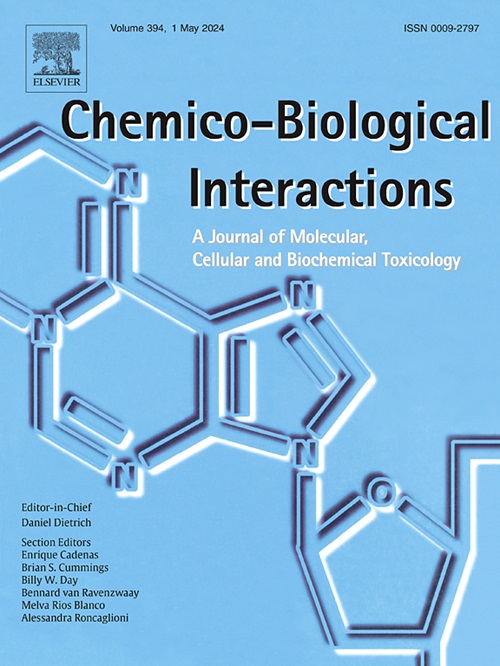6:2 chlorinated polyfluoroalkyl ether sulfonate (F–53B) induced nephrotoxicity associated with oxidative stress, inflammation and fibrosis in mice
IF 4.7
2区 医学
Q1 BIOCHEMISTRY & MOLECULAR BIOLOGY
引用次数: 0
Abstract
6:2 Chlorinated polyfluoroalkyl ether sulfonate (trade name F–53B) is a substitute for perfluorooctane sulfonate (PFOS) used in the plating industry, and has been found in a range of environmental matrices and livings. There are numerous ways by which it is biotoxic to mammals. The kidneys are critical for maintaining homeostasis. However, little research has been conducted on how F–53B affects the kidneys. In this work, we investigated the renal toxicity of long-term oral F–53B treatment in C57BL/6J mice. Mice were allowed to drink F–53B freely at concentrations of 0, 0.057, 0.57, and 5.7 mg/L for 8 weeks. Renal oxidative stress, inflammation, and fibrosis were detected in mice exposed to F–53B, and the expression of related biochemical markers was significantly altered. Further investigations revealed that the TGF-β1/Smad3 and NF-κB signaling pathways may be associated with F–53B-induced renal fibrotic damage and inflammation. Overall, this study suggested that F–53B causes renal injury possibly via oxidative stress, activating the TGF-β1/Smad3 and NF-κB signaling pathways. This provides a foundation for further research into the harmful mechanism of F–53B in mammals.

6:2 氯化多氟烷基醚磺酸盐(F-53B)诱发小鼠肾脏中毒,并伴有氧化应激、炎症和纤维化。
6:2 氯化多氟烷基醚磺酸盐(商品名 F-53B)是电镀行业使用的全氟辛烷磺酸(PFOS)的替代品,已在各种环境基质和生物体中发现。全氟辛烷磺酸对哺乳动物具有多种生物毒性。肾脏对维持体内平衡至关重要。然而,有关 F-53B 如何影响肾脏的研究却很少。在这项工作中,我们研究了长期口服 F-53B 对 C57BL/6J 小鼠肾脏的毒性。让小鼠自由饮用浓度为 0、0.057、0.57 和 5.7 mg/L 的 F-53B,持续 8 周。在暴露于 F-53B 的小鼠体内检测到了肾氧化应激、炎症和纤维化,相关生化指标的表达也发生了显著变化。进一步研究发现,TGF-β1/Smad3 和 NF-κB 信号通路可能与 F-53B 诱导的肾纤维化损伤和炎症有关。总之,这项研究表明,F-53B 可能通过氧化应激、激活 TGF-β1/Smad3 和 NF-κB 信号通路导致肾损伤。这为进一步研究 F-53B 在哺乳动物体内的有害机制奠定了基础。
本文章由计算机程序翻译,如有差异,请以英文原文为准。
求助全文
约1分钟内获得全文
求助全文
来源期刊
CiteScore
7.70
自引率
3.90%
发文量
410
审稿时长
36 days
期刊介绍:
Chemico-Biological Interactions publishes research reports and review articles that examine the molecular, cellular, and/or biochemical basis of toxicologically relevant outcomes. Special emphasis is placed on toxicological mechanisms associated with interactions between chemicals and biological systems. Outcomes may include all traditional endpoints caused by synthetic or naturally occurring chemicals, both in vivo and in vitro. Endpoints of interest include, but are not limited to carcinogenesis, mutagenesis, respiratory toxicology, neurotoxicology, reproductive and developmental toxicology, and immunotoxicology.

 求助内容:
求助内容: 应助结果提醒方式:
应助结果提醒方式:


